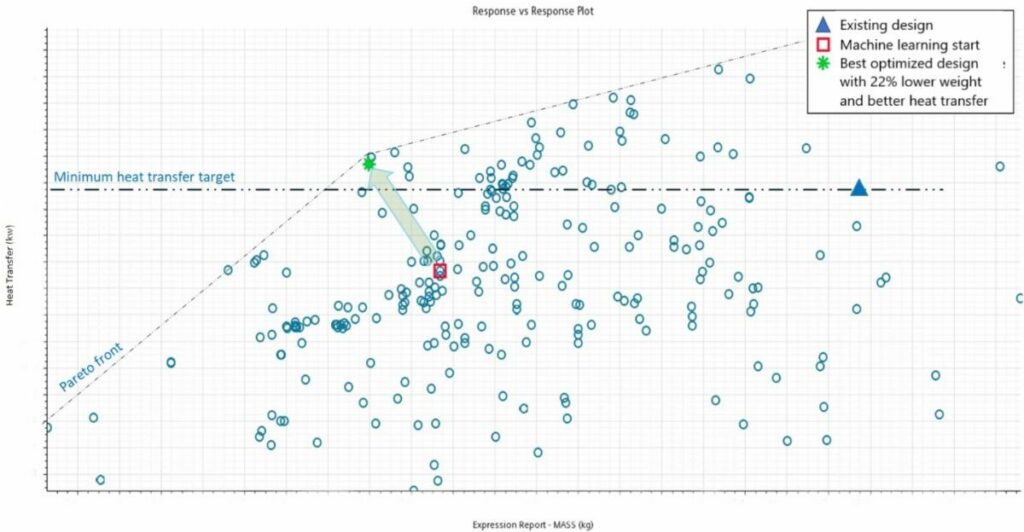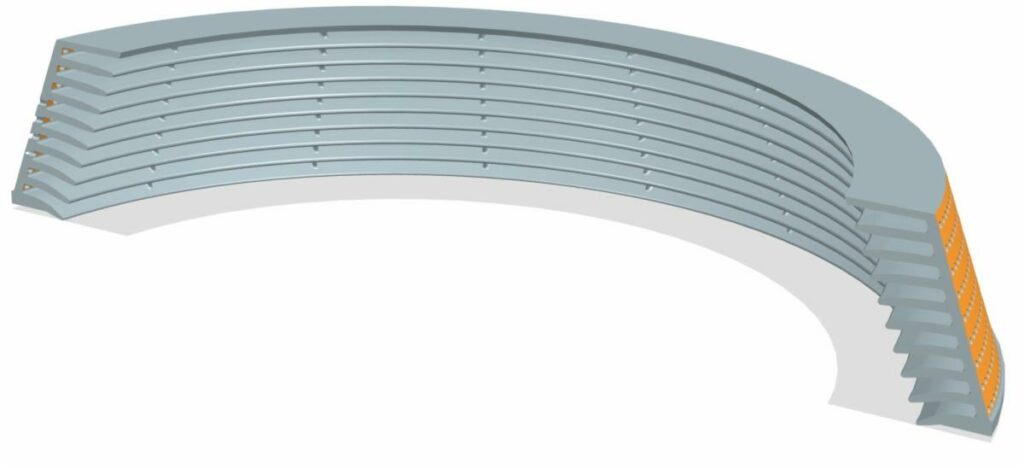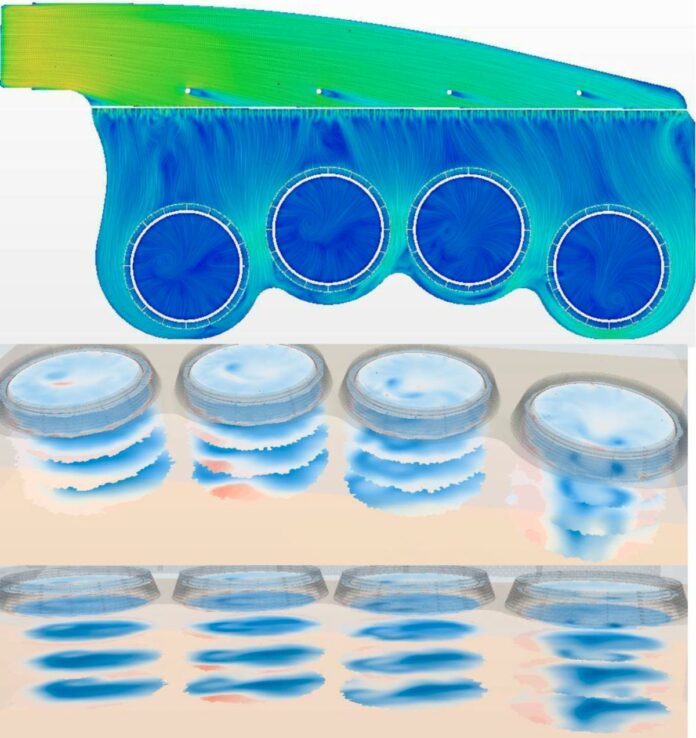In the digital-design-engineering world, there’s an urgent opportunity, right now, to fully exploit the tools of computer-aided engineering (CFD, FEA, electromagnetic simulation and more) using the capabilities of AI. Yes, we’re talking about design optimization—but it’s optimization automated with machine learning. In the article below, Robin Tuluie, Founder and co-CEO, PhysicsX, discusses how Artificial Intelligence (AI) applied to designs of additively manufactured products goes beyond standard optimization to produce quality and performance gains in much less time.
We’re talking quantum leaps in efficiency and accuracy: AI tools can cut simulation times from hours to only seconds, employing deep learning to automatically evaluate, and then incrementally modify, the geometry of a part—within bounds that the user dictates—in order to create specific outcomes. The resulting, final design achieves the ideal combination of whatever attributes its makers have prioritized: lighter weight, stress and fatigue reduction, optimum fluid flow, heat exchange, conductivity, durability, part consolidation, and more.
How is this possible? With less number crunching, not more.
Now there’s no escaping the laws of physics; you have to do your design diligence, using whatever market-leading CAE tools are most compatible with your company’s product requirements. But what AI software can add to the digital-design platform is the ability to work within your existing simulation tools and reduce the need to calculate every single differential equation involved.
AI accomplishes this feat by solving the CFD or FEA equations in a non-traditional way: machine learning examines, and then emulates, the overall physical behavior of a design, not every single math problem that underlies that behavior. This uses far fewer computational resources while achieving an extremely robust evaluation of the design in every applicable environment. Hundreds of thousands of design candidates can be simulated and evaluated in less than a day. Bottom line: Applying AI amplifies the typical 10-20% performance improvements of simulation tools alone—up to 30% and higher. (Of course it follows that real-world testing of finished parts remains an essential task to ensure that all quality and performance metrics are met.)
While machine learning can certainly benefit the design of products that are produced via any type of manufacturing process or technology, it’s with additive manufacturing (AM) that AI is perhaps the most complementary. Read more in this dossier: Is AI the “magic word” designed to make your product design less boring?
Here’s an interesting example of one AM equipment provider that used deep-learning software to optimize their 3D printer:
Now that advanced metal AM is producing parts certified for rockets, aircraft, and heavy industry (oil & gas, power, etc.), customer demand for larger-volume equipment has been surging. Several years ago, in anticipation of this, California-based Velo3D began designing its larger-volume Sapphire XC (extra capacity, with a 400% bigger build chamber) to include eight 1,000-watt lasers, four times as many as its original Sapphire machine.
Lasers produce soot when they melt metal powder material inside an AM build chamber. During this process some of the material vaporizes and condenses into very small particles that can occlude the lasers as they target the powder bed. The solution for this is to provide a constant flow of inert gas (typically Argon, but it depends on the reactivity of the material being melted) to sweep away the soot as it’s generated.
Sometimes, however, particles can escape this flow and land on the windows through which the laser light enters the chamber, causing contamination and heating that can distort the window itself. This creates what’s in effect an unintended “lens” in the optical path, bending the laser light from its intended direction and defocusing its spot size on the material bed. As this understandably affects build quality, it’s imperative that the laser windows remain clean throughout the build.
A robust loop between the CFD, generative geometry creation tools and an AI controller
 Velo3D had already thought through the optimum gas flow for its bigger machines’ build chambers overall. But they knew that the longer powder bed, greater interior volume, and tighter packing of more lasers would be a challenge when creating optical window nozzles for their XC system. It was anticipated that the amount of soot generated by the new machines would be about four times as much as the original ones.
Velo3D had already thought through the optimum gas flow for its bigger machines’ build chambers overall. But they knew that the longer powder bed, greater interior volume, and tighter packing of more lasers would be a challenge when creating optical window nozzles for their XC system. It was anticipated that the amount of soot generated by the new machines would be about four times as much as the original ones.
Velo3D requested PhysicsX to design and simulate a solution. PhysicsX has deep experience in simulation, optimization and designing for tight packages (from considerable work in F1 racing and expertise in data science, machine learning and engineering simulation), plus proprietary simulation-validated tools that can automatically iterate on designs using machine learning/AI-based simulations. The PhysicsX approach involves creating a robust loop between the CFD, generative geometry creation tools and an AI controller to train a geometric deep learning surrogate. The surrogate’s speed, producing high-quality CFD results in under a second, is then exploited with a super-fast geometrical generative method in another machine learning loop, which deeply optimizes the design towards whichever multiple objectives the engineer decides are important. The fidelity of the deep learning tools and robust workflow enables a highly accurate solution for final validation of the results against the validated CFD model.
In the Velo3D window nozzle case, a number of metrics were used to automatically quantify the fraction of the recirculating flow within the argon curtain that was travelling upward towards the window. PhysicsX benchmarked the Sapphire window solution at the start of the project, then applied their proprietary AI/machine-learning software, and ran huge volumes of simulations to optimize the final design. This resulted in a nozzle design that produced the optimum Argon curtain flow, while working within the manufacturing envelope of the additive machine.

The intricacy of the final turning-vane design would be a challenge to many conventional AM systems, but the Sapphire machine’s ability to 3D print extremely thin, smooth and low-angle vanes delivered the geometry that allowed the nozzles to function as intended. The final design was optimized for and produced on an original Sapphire and the first-ever-manufactured Sapphire XC was run successfully with the new window-nozzle parts in place—an example of an AM machine printing its own parts.
An opportunity to transform designs for AM
 This AM-nozzle-optimization example exemplifies the potential synergy between AI design optimization and 3D printing in a number of ways. No advanced-technology development can happen these days without computer simulation playing a role. Yet the simulation process still involves significant computing resources and hands-on optimization skills that slow process improvement—which is exactly what the AM industry is still working on.
This AM-nozzle-optimization example exemplifies the potential synergy between AI design optimization and 3D printing in a number of ways. No advanced-technology development can happen these days without computer simulation playing a role. Yet the simulation process still involves significant computing resources and hands-on optimization skills that slow process improvement—which is exactly what the AM industry is still working on.
Here is where AI can step in to intelligently accelerate and automate decision making for designers and engineers working in additive. In the case above, deep learning optimization not only transformed the geometry of a working 3D-printer component, but also improved the function of the key laser system that enables extreme acuity and therefore final product quality. These are the very attributes that the AM industry still needs to scale up and deliver on a global basis—what aerospace, automotive, science, medicine and other fields are looking for from the technology. Deep learning can be the accelerator that pushes the AM industry to achieve these goals.
Remember, you can post job opportunities in the AM Industry on 3D ADEPT Media or look for a job via our job board. Make sure to follow us on our social networks and subscribe to our weekly newsletter: Facebook, Twitter, LinkedIn & Instagram ! If you want to be featured in the next issue of our digital magazine or if you hear a story that needs to be heard, make sure you send it to contact@3dadept.com


